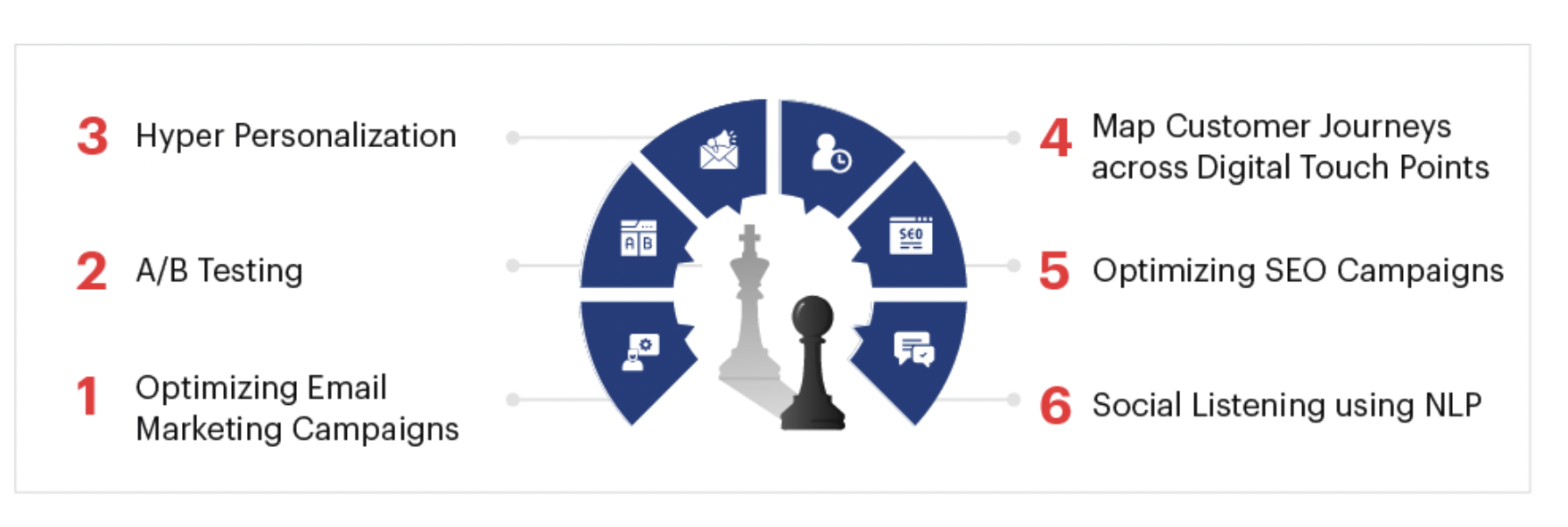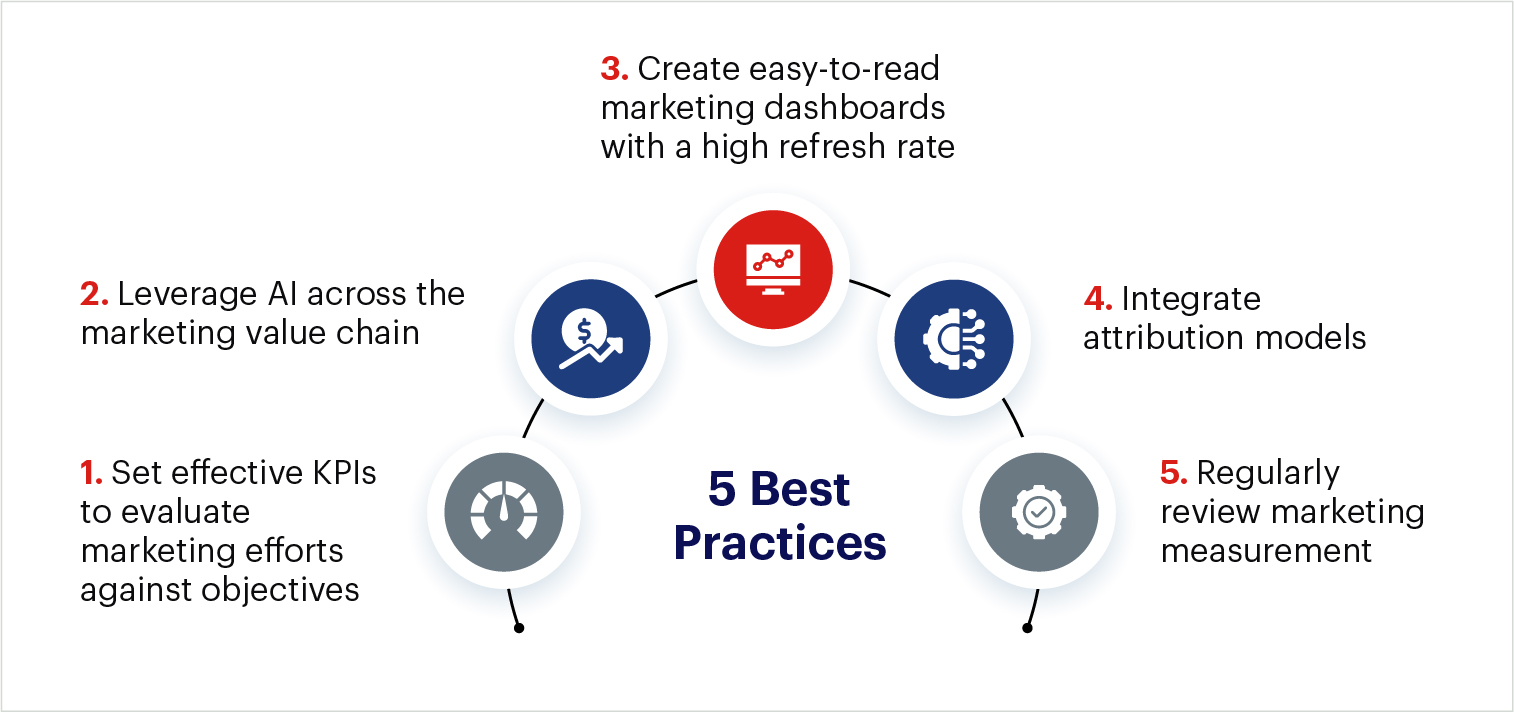Marketing Analytics: Everything you need to know
What is Marketing Analytics?
Marketing analytics is a powerful data analysis technique designed to measure, analyze, and optimize your marketing efforts.
The primary objective of marketing analytics is to gain a deep understanding of consumer behavior. Marketing analytics encompasses a wide range of activities, all aimed at extracting actionable insights from the vast amounts of data available. From data collection and cleansing to data modeling and visualization, each step in the process is crucial for uncovering meaningful patterns and trends.
A series of methods and models can be employed to analyze marketing data, depending on the key performance indicators (KPIs). For instance, by analyzing historical data on customer behavior, purchase patterns, and retention rates, marketers can calculate Customer Lifetime Value (CLV) to identify their most valuable customers and tailor their marketing strategies accordingly. Some popular analytics models and methods include:
- Media Mix Models (MMM): Attribution models that examine aggregated data over a substantial period of time.
- Multi-Touch Attribution (MTA): Attribution models that provide data at the individual level, capturing information from the entire buyer's journey.
How marketing analytics helps in targeted decision-making
The transformative power of marketing analytics cannot be overstated in the current dynamic business landscape. It serves as a guiding force, empowering businesses to propel their growth through informed decision-making. By harnessing advanced data analytics, businesses can delve deep into the psyche of their target audience, evaluate the impact of their marketing campaigns, and refine their overarching marketing strategy for optimal results.
Maximize marketing ROI with better decision-making
Data collection & integration
Data
pipelines development
Data Visualization
& reporting
Performance measurement & optimization
Predictive
analytics
& forecasting
Strategic
decision
making

AI-driven audience targeting
Watch marketing experts from Reckitt and Sigmoid discuss the role of AI and ML in improving Return on Ad Spend (ROAS).

A guide to effective marketing analytics
Discover the essential strategies and techniques to harness the full potential of marketing analytics.
Maximize efficiency with Generative AI
Explore Sigmoid’s pre-built Generative AI solutions for use cases across marketing, customer experiences, and more!
Marketing analytics use cases for businesses
Marketing has evolved from a creative and intuitive field to one that relies heavily on analytics. 78% of companies report improved performance and efficiency when marketing analytics is applied for audience targeting and segmentation. Here are some ways marketing analytics empowers marketers:

- Email marketing optimization: Open rates, click-through rates, and conversion rates
- A/B testing: UI/UX modifications, reduced bounce rates, and optimized keywords
- Hyper-personalization: Customized messaging, better engagement, and enhanced experiences
- Customer journey mapping: Better understanding of customer needs and pain points
- SEO campaign optimization: With analytics, companies can track and optimize SEO campaigns, identify top-performing content, compare organic and non-organic visitors, and benchmark against competitors.
- Social listening with NLP: Sentiment analysis, proactive customer service, and customer loyalty
Reach the right targets through the right channels
5 best practices in implementing marketing analytics
To enhance marketing analytics and drive impactful results, companies should follow these best practices:

- Set effective KPIs: Establish Key Performance Indicators (KPIs) that align with specific marketing objectives and goals. This allows companies to evaluate the impact of their marketing efforts and make data-driven decisions. Common KPIs include cost per lead acquisitions, sales revenue, customer lifetime value, traffic-to-lead ratio, and organic searches.
- Leverage AI for insights: Utilize artificial intelligence (AI) throughout the marketing value chain by integrating data from various sources such as ERP systems, CRM, Google Analytics, and social media. AI enables targeted and data-driven marketing strategies, improving areas like media buying, lead evaluation, personalized recommendations, and marketing automation.
- Create user-friendly dashboards: Develop easy-to-read marketing dashboards with a high refresh rate. These dashboards provide a near-real-time view of marketing activities, including KPI tracking and relevant analytics. Customizability in real-time helps marketing teams review market trends and derive actionable insights from campaigns.
- Integrate attribution models: Experiment with and combine different attribution models as part of an omnichannel attribution strategy. No single model can provide a complete view of today's complex marketing landscape. By integrating multiple models, marketers gain insights into the touchpoints that drive return on marketing investment (ROMI).
- Regularly review marketing measurement: Make reviewing analytics a daily objective rather than waiting until the end of a month or campaign. By monitoring metrics and evaluating trending data in real-time, marketing teams can make timely adjustments to optimize their campaigns and increase effectiveness.
Further reads
Blog
Case study
FAQs
Marketing analytics tools refer to solutions that enable companies to monitor, evaluate, and analyze their marketing performance. They provide real-time insights into key metrics like click-through rates, conversion rates, and customer interactions, allowing marketers to assess the effectiveness of their campaigns.
Predictive analytics in marketing leverages data analytics to anticipate customer behavior, optimize campaigns, and improve outcomes. It leverages historical and real-time data to help companies segment customers, predict churn, score leads, provide personalized recommendations, and optimize campaigns for better results.
Various segmentation techniques are used in marketing analytics to better understand and target specific customer groups. These techniques include demographic segmentation (age, gender, income, etc.), psychographic segmentation (attitudes, values, and lifestyles), behavioral segmentation (purchasing patterns, brand loyalty, etc.), and geographic segmentation (location and regional factors).
By analyzing data from various marketing channels, such as social media, email campaigns, and website traffic, businesses can determine which channels are driving the highest return on investment (ROI). This allows businesses to allocate their budget more effectively by investing in the channels that yield the best results.











